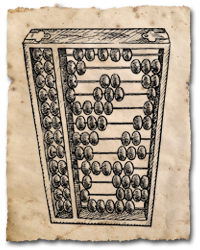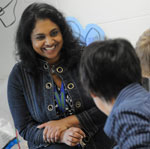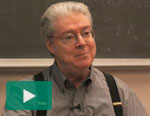What's the Best Way to Teach Math?
By Grant Martin
 If you’ve ever helped a fifth-grader with homework, you know that elementary-school math is anything but basic. Not that it’s particularly hard to get certified to teach math in the early grades—in Alabama, teachers who have completed 12 credit hours of college-level math courses are ready to hit the blackboard. But passing classes is only part of what makes an effective teacher, says Michael J. Froning, Ed.D., a former middle- and high-school math teacher and former director of the Russell Mathematics and Science Center at the Alabama School of Fine Arts. Froning retired as dean of the UAB School of Education in February and is now executive director of the Birmingham Education Foundation.
If you’ve ever helped a fifth-grader with homework, you know that elementary-school math is anything but basic. Not that it’s particularly hard to get certified to teach math in the early grades—in Alabama, teachers who have completed 12 credit hours of college-level math courses are ready to hit the blackboard. But passing classes is only part of what makes an effective teacher, says Michael J. Froning, Ed.D., a former middle- and high-school math teacher and former director of the Russell Mathematics and Science Center at the Alabama School of Fine Arts. Froning retired as dean of the UAB School of Education in February and is now executive director of the Birmingham Education Foundation.
More Than Method
Rote memorization, which focuses on teaching the right method—or algorithm—to solve each problem, has long been the favored approach. But modern research shows that “the key in elementary schools is to make sure math is taught for understanding,” Froning says. “We’re getting away from blind obedience to the algorithm. If students use the algorithm and get the answer wrong, they don’t know what happened. They don’t know how to figure out why they got it wrong.”
At UAB, future teachers get to take advantage of new insights and methods developed in the Greater Birmingham Math Partnership (GBMP), a consortium of nine Birmingham metropolitan school systems, UAB, Birmingham-Southern College, and a Seattle-based nonprofit called the Mathematics Education Collaborative.
|
Dance, movies, football: Learn how Dilhani Uswatte helps students find magic in math in this UAB Magazine profile. |
The alliance, which was recently awarded a new three-year, $2.1-million grant from the National Science Foundation, emphasizes the importance of teaching students the principles behind the formulas. “We want to help teachers improve their performance and help them energize their classrooms by getting students excited about math,” says John Mayer, Ph.D., a UAB mathematics professor and principal investigator on the GBMP project.
“This doesn’t mean that we ignore content knowledge,” Froning points out. “But at the most basic level, we want teachers to engage the students in a dialogue.” In these “number talks,” teachers discuss basic arithmetic, and kids carry on conversations about why and how the numbers work in a particular problem. “Instead of just learning a rule, we have kids talk through the process,” Froning explains. “Once they can talk about it, their understanding increases dramatically.”
There is a benefit for the teachers as well. “We found that by growing a teacher’s knowledge base, we can grow the feelings of empowerment as both a learner and teacher of mathematics,” Mayer says. “The teachers become believers in the power of providing a challenging, inquiry-based environment for their students.”
Fighting Fear
Froning points to UAB alumna Dilhani Uswatte as a perfect example. A middle-school math teacher in Birmingham, Uswatte recently received the $25,000 Milken Educator Award (the “Oscars of education,” as Froning calls them) after starting several mathematics programs at her school and using innovative methods to engage students in the classroom.
Another benefit of the understanding-based approach, Froning says, is that it eliminates fear—a fear that eventually makes many people reject math altogether. “It’s unconscionable that it is OK for people to say they’re no good at math,” he says. “The only way this ‘can’t-do’ attitude changes is by overemphasizing understanding—so that when you come up against problems that you can’t solve, you don’t fall back on the easy avoidance that begins with, ‘Oh, I’m not a math person.’”

